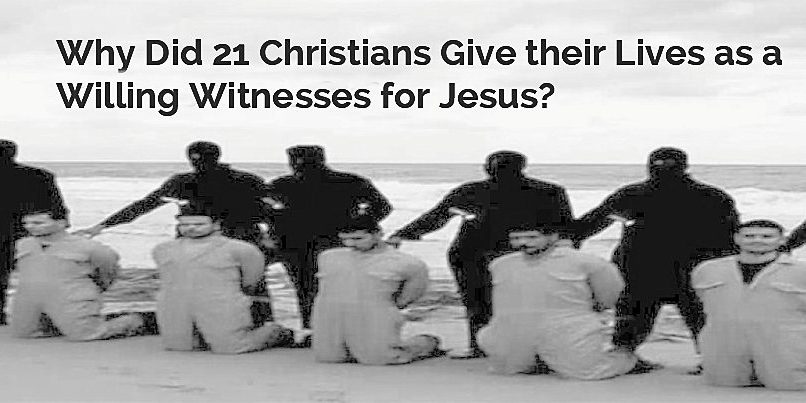The unwanted but permanent images of the brutal beheadings of faithful Christians by Islamic Extremists have been etched into our minds. In the face of such horror, we hear a repeated question from Christians and non-Christians. “How do they remain faithful to Christ while facing suffering and death?
The question is not new. Since unyielding Christians, in the early years of the faith, were fed to lions, burned alive, and crucified, that same question has been asked many times. How did they do it; and how do modern martyrs and ordinary Christian today continue to face suffering on a wide range of intensity yet remain faithful?
I was determined to get answers to this tough question, but not just theoretical answers. And I wanted to know what those who suffered and their family members had to say. So, over the years I listened to what those in hospitals, hospice centers, funeral parlors, and their homes had to say as they stood firm in their faith against unimaginable pain and questions.
My research revealed a number of highly encouraging insights. As I have shared those testimonies with others, they have helped many handle the problem of unjust evil, unfair suffering, and even death. Below is a list of those testimonial-insights that reveal different ways various courageous Christians viewed such situations.
I pray that what they reported will help you and those to whom you are trying to support.
_________________________________
Christians remained faithful while facing sufferings or death because they viewed their circumstances as:
- Enlightenment. Some saw suffering as a way to deeper insights to what counts.
- Preparation. Some saw suffering as a way to strengthen them for future tasks.
- Revelation. Some saw suffering as a way to help focus on eternity and God.
- Hope-building. Some saw suffering as participating in Jesus’ hopeful suffering.
- Protection. Some saw suffering as getting their attention before worse came.
- Reasonable. Some saw suffering as a natural part of our creation.
- Sacrificial. Some saw suffering as a sacrificial choice for others.
.
- Irresponsibility. Some saw suffering as a result of immorality.
- Evidential. Some saw suffering as proof of genuine faith.
- Probational. Some saw suffering as temporary and a part of life.
- Punishment. Some saw suffering as judgment on evil.
- Mystery. Some saw suffering as simply a mystery beyond our understanding.
Of course, these are brief summary statements to an important and tough question. If you want to read the full description and learn more about each of these insights, I invite you to accept a FREE Introduction Chapter and Table of Contents of my new book, Healthy Faith: A Strategic Lifestyle Plan to Transform Your Head, Heart, and Hands.
For your FREE Preview Introduction Chapter and Table of Contents, click here.
To learn more about Dr. Bill Nichols and Healthy Faith, click here.
To purchase a copy of Healthy Faith, click here.


